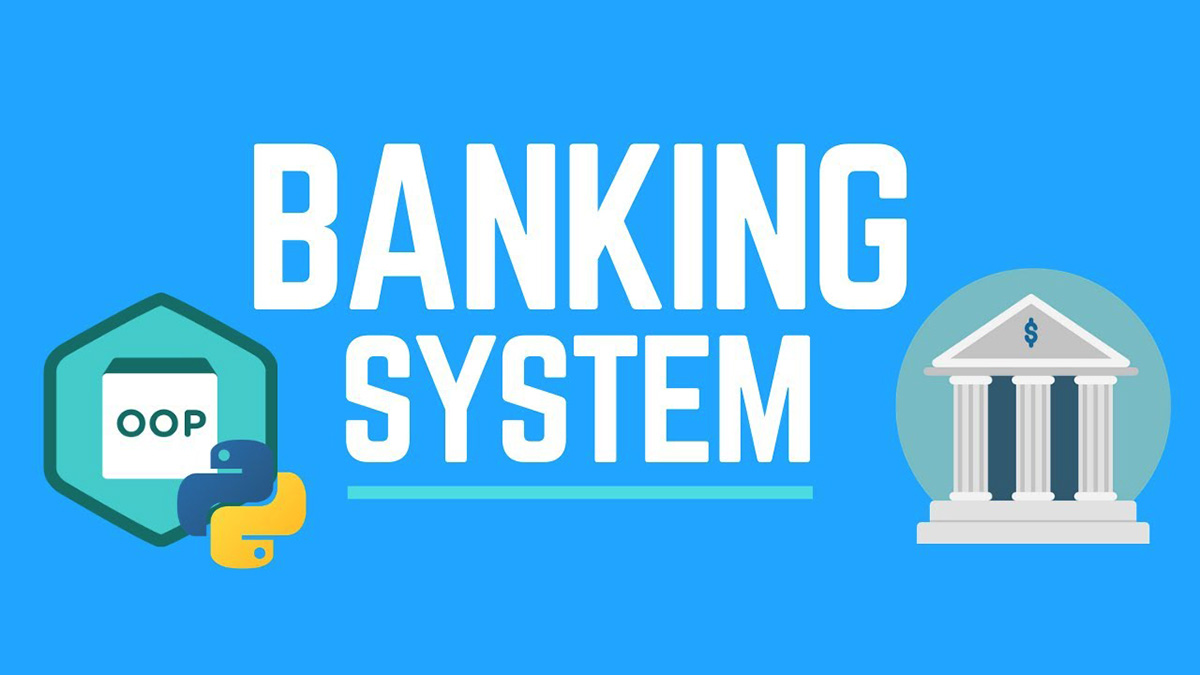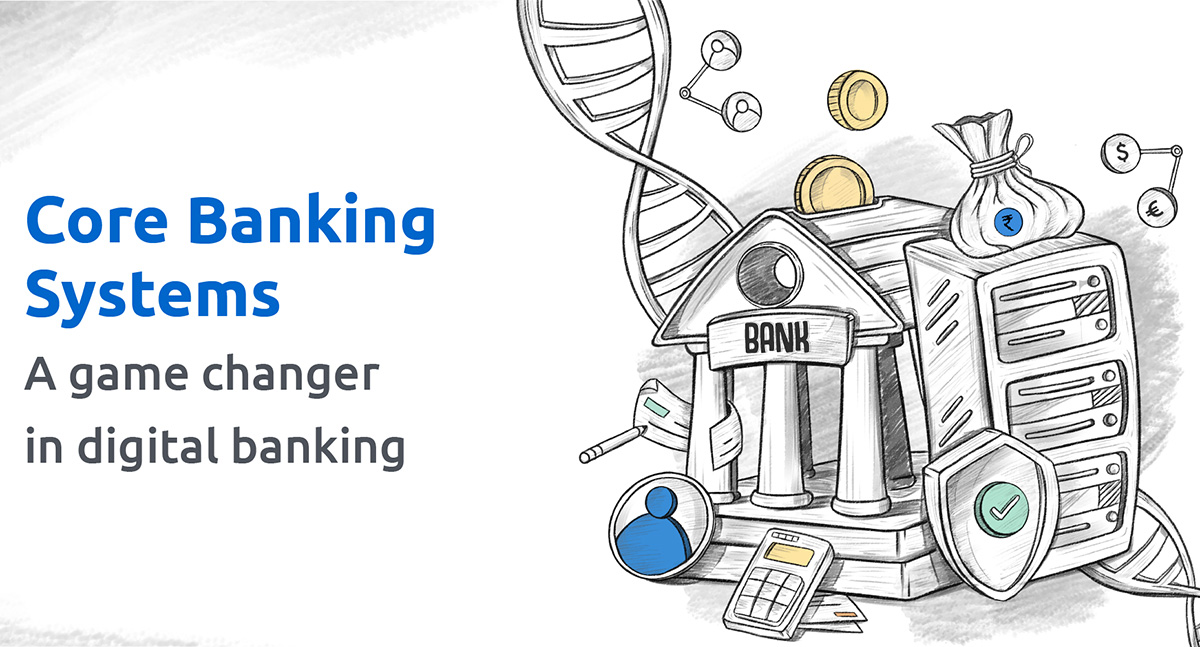

Finance
How To Create A Banking System
Published: October 13, 2023
Learn how to create a comprehensive banking system and manage your finances effectively with our expert guide. Gain control over your financial transactions and make informed decisions.
(Many of the links in this article redirect to a specific reviewed product. Your purchase of these products through affiliate links helps to generate commission for LiveWell, at no extra cost. Learn more)
Table of Contents
- Introduction
- Step 1: Understanding the Requirements
- Step 2: Designing the Database
- Step 3: Creating User Interface
- Step 4: Implementing Authentication and Security
- Step 5: Developing Account Management System
- Step 6: Handling Transactions and Balance
- Step 7: Incorporating Additional Banking Features
- Step 8: Testing and Debugging
- Conclusion
Introduction
Welcome to the world of banking systems! In this article, we will explore the intricacies of creating a banking system from scratch. With the rapid advancement of technology, the finance industry has transformed significantly, making it crucial for financial institutions to have a robust and efficient banking system to serve their customers.
Whether you are a financial institution looking to develop a bespoke banking system or an entrepreneur venturing into the fintech industry, understanding the process of creating a banking system is vital. This comprehensive guide will walk you through the essential steps and considerations to design and develop a reliable and user-friendly banking system.
Before diving into the details, it is crucial to comprehend the requirements and complexities involved in building a banking system. A banking system is not just a mere platform for conducting financial transactions; it needs to incorporate functionalities such as user authentication, account management, transaction handling, and security measures to protect sensitive information.
In this article, we will break down the process into eight vital steps to guide you through the creation of a robust banking system:
- Understanding the requirements
- Designing the database
- Creating user interface
- Implementing authentication and security
- Developing account management system
- Handling transactions and balance
- Incorporating additional banking features
- Testing and debugging
By following these steps in a systematic manner, you can create a powerful and secure banking system that caters to the needs of both financial institutions and their customers. So, let’s get started with the first step: understanding the requirements.
Step 1: Understanding the Requirements
Before starting the development of a banking system, it is essential to have a clear understanding of the requirements. This step lays the foundation for the entire project and ensures that all necessary functionalities are incorporated.
Firstly, identify the target audience for your banking system. Are you building it for a specific financial institution or for a wider range of users? Understanding the target audience will help you design a user-friendly interface and determine the level of complexity needed in the system.
Next, consider the core functionalities required in a banking system. This typically includes features such as user registration and authentication, account management, transaction processing, balance updates, and statement generation. Additionally, you may need to incorporate features like fund transfers, loan management, credit card processing, and integration with external payment gateways.
Compliance with industry regulations is another critical aspect to consider. Banking systems need to adhere to various regulatory standards such as Know Your Customer (KYC) protocols, anti-money laundering (AML) regulations, and data protection measures. Ensuring that your system meets these requirements is essential to safeguard user data and maintain legal compliance.
Integration with third-party services may also be necessary. For example, integrating with credit bureaus or payment processors can enhance the functionality and convenience of your banking system. Research and identify the external services that align with your requirements and ensure seamless integration.
Consider the scalability and performance requirements of your banking system. As the number of users and transactions increases, the system should be able to handle the load and perform efficiently. Factors such as database design, server infrastructure, and technology stack play crucial roles in achieving scalability and performance.
Finally, security is of utmost importance in any banking system. Implement robust security measures to protect user data, prevent unauthorized access, and secure financial transactions. This may include encryption techniques, secure communication protocols, and multi-factor authentication.
Taking the time to thoroughly understand the requirements will set you on the right path towards developing a successful banking system. Once you have a clear understanding of the requirements, you can proceed to the next step: designing the database.
Step 2: Designing the Database
Designing a well-structured and efficient database is crucial for the smooth functioning of a banking system. The database serves as the backbone of the system, storing and managing all the essential data related to users, accounts, transactions, and other relevant information.
Start by identifying the different entities that need to be stored in the database. The primary entities in a banking system typically include users, accounts, transactions, and administrative data. Determine the attributes for each entity, such as name, address, contact details for users, account number, balance, account type for accounts, and amount, date, and transaction type for transactions.
Next, establish the relationships between the entities. For example, there is a one-to-many relationship between users and accounts, as a user can have multiple accounts. Similarly, there is a many-to-many relationship between accounts and transactions, as an account can have multiple transactions, and a transaction can involve multiple accounts.
Ensure that you establish proper keys and indices to optimize data retrieval and improve performance. Primary keys uniquely identify each record in a table, while foreign keys establish relationships between tables. Implement proper indexing strategies to speed up search and retrieval operations.
Consider the normalization principles to eliminate data redundancy and maintain data integrity. Normalize the database by breaking down the entities into smaller tables to reduce data duplication and ensure consistency. This also helps in improving the efficiency of data management and reduces the chances of data inconsistencies.
Choose an appropriate database management system (DBMS) based on your requirements and preferences. Popular choices for banking systems include relational databases like MySQL, PostgreSQL, and Oracle, as well as NoSQL databases like MongoDB and Cassandra. Select the DBMS that aligns with the scalability, performance, and security needs of your system.
Once you have designed the database schema, create the tables, establish relationships, and define constraints such as primary keys, foreign keys, and data types. Plan for backups, disaster recovery, and regular database maintenance to ensure data integrity and minimize the risk of data loss.
Designing a well-optimized database is vital for building a banking system that can handle large volumes of data, provide quick access to information, and ensure the integrity of financial transactions. With the database design in place, you can move on to the next step: creating the user interface.
Step 3: Creating User Interface
The user interface (UI) is the face of your banking system, where users interact with the system to perform various tasks. Creating an intuitive and user-friendly UI is essential for enhancing the user experience and ensuring customer satisfaction.
Start by understanding the different user roles and their specific requirements. Typically, a banking system includes roles such as customers, employees, and administrators. Each role may have different access levels and functionalities. Analyze the needs of each role and design the interface accordingly.
Focus on creating a clean and intuitive design layout. Use a consistent color scheme, typography, and visual elements to establish a cohesive UI design. Ensure that the UI is responsive and accessible across different devices and screen sizes to cater to a wide range of users.
Design the navigation flow to be logical and intuitive. Organize the information in a hierarchical structure, allowing users to easily navigate through different sections of the banking system. Use descriptive labels and provide informative tooltips to guide users through various features and functionalities.
Implement user-friendly forms for tasks such as registration, login, and account creation. Validate user inputs and provide helpful error messages to ensure accurate and error-free data entry. Utilize dropdown menus, radio buttons, and checkboxes where appropriate to simplify the selection process for users.
Incorporate interactive features to enhance user engagement and convenience. Implement features like autocomplete, search functionality, and filters to allow users to find specific information quickly. Provide options for users to personalize their settings, such as language preferences or theme customization.
Ensure seamless integration with external services, such as payment gateways or credit bureaus. Design the UI in a way that allows users to seamlessly connect their bank accounts to external services for fund transfers or credit checks.
Consider the importance of accessibility and inclusivity when designing the user interface. Incorporate accessibility features like screen reader compatibility, keyboard navigation, and color contrast options to ensure that individuals with disabilities can use the system without any limitations.
Regularly gather user feedback and make iterative improvements to the UI. Conduct usability tests to identify any pain points or areas of improvement. Analyze user behavior using analytics tools to gain insights into how users interact with the system and make data-driven decisions to optimize the UI.
Creating an intuitive and user-friendly UI is essential for the success of a banking system. A well-designed interface improves user satisfaction, facilitates smooth navigation, and enhances the overall user experience. With the user interface in place, it’s time to move on to the next step: implementing authentication and security.
Step 4: Implementing Authentication and Security
Implementing robust authentication and security measures is paramount in a banking system to protect user data, prevent unauthorized access, and ensure the integrity of financial transactions. This step focuses on incorporating various security features to safeguard your banking system.
Start by implementing user authentication mechanisms to ensure that only authorized users can access the system. Use a secure hashing algorithm to store user passwords in the database. Consider implementing additional security measures, such as two-factor authentication (2FA) or biometric authentication, to provide an extra layer of protection.
Implement user session management to control user sessions and prevent unauthorized access. Use techniques like session tokens, session timeouts, and secure session storage to manage user sessions effectively. Implement mechanisms to detect and prevent session hijacking or session fixation attacks.
Apply secure communication protocols, such as SSL/TLS, to encrypt data transmitted between the user’s device and the banking system server. This ensures that user data remains confidential and protected from interception or tampering. Regularly update SSL/TLS certificates to maintain the security of the system.
Implement proper access controls to restrict user permissions based on their roles and privileges. Use role-based access control (RBAC) mechanisms to define and manage user permissions. This ensures that users can only access the functionalities and data that they are authorized to view or manipulate.
Employ rate limiting mechanisms to prevent brute force attacks and password guessing attempts. This limits the number of login attempts within a specific timeframe, preventing malicious actors from accessing user accounts through trial and error methods.
Implement security measures to protect against common web vulnerabilities, such as cross-site scripting (XSS), cross-site request forgery (CSRF), and SQL injection attacks. Use input validation and parameterized queries to prevent malicious user inputs from impacting the system’s integrity.
Regularly update and patch the system’s software to mitigate vulnerabilities and security loopholes. Stay informed about the latest security threats and follow best practices to ensure that your system remains secure.
Monitor and log user activities to detect any suspicious or malicious behavior. Implement security incident response mechanisms to quickly respond to and mitigate any security breaches. Have a backup and recovery plan in place to restore data in case of any system failures or security incidents.
Conduct periodic security audits and penetration testing to identify vulnerabilities and address them promptly. Engage the services of security professionals to assess the system’s security posture and ensure its resilience against potential attacks.
Implementing robust authentication and security measures is critical to maintaining the trust of users and safeguarding their sensitive information. With authentication and security features in place, you can move forward to the next step: developing the account management system.
Step 5: Developing Account Management System
The account management system is a vital component of a banking system, responsible for managing user accounts, balances, and related functionalities. This step focuses on developing a robust and efficient account management system that caters to the needs of users and the financial institution.
Start by creating a user registration process that allows users to create their accounts. Collect required information such as name, contact details, and identification documents (based on regulatory requirements) to establish user profiles. Implement validation mechanisms to ensure accurate and valid user inputs.
Create a system to manage different types of accounts, such as savings accounts, checking accounts, and investment accounts. Design the system to allow easy creation, modification, and closing of accounts as per the user’s requirements. Implement business rules and validation checks to ensure the integrity of account data.
Develop functionality for users to view their account details, such as account balance, transaction history, and associated services. Implement features that allow users to update their account information, request account statements, or generate reports for specific time periods.
Include features for users to link their accounts to external services, such as credit cards or payment gateways. Utilize secure integration techniques and implement necessary validations and security measures to ensure seamless and secure transactions between the banking system and external services.
Implement account authentication and authorization mechanisms to ensure that users can access and manage only their own accounts. Build functions that allow users to reset their account passwords or recover access in case they forget their login credentials.
Establish mechanisms for users to perform various account-related tasks, such as fund transfers between their own accounts or to other users, setting up automated bill payments, or managing standing instructions for recurring transactions.
Develop functionality to handle account closures, including necessary validations and transaction-related procedures. Implement account freezing or blocking mechanisms to prevent unauthorized access or suspicious activities.
Consider incorporating features for users to customize their account settings, such as preferred language, notification preferences, or savings goals. Tailor the system to provide a personalized experience for users, enhancing their satisfaction and engagement.
Ensure that the account management system adheres to regulatory requirements and industry standards. Implement necessary checks, such as Know Your Customer (KYC) and Anti-Money Laundering (AML) measures, to ensure compliance with legal and regulatory frameworks.
Thoroughly test the account management system to validate its functionalities, performance, and security. Conduct user acceptance testing to gather feedback and make necessary improvements. Continuously monitor and update the system to address any bugs or issues that may arise.
Developing a robust account management system is essential for the efficient functioning of a banking system. With the account management system in place, you can move forward to the next step: handling transactions and balance.
Step 6: Handling Transactions and Balance
Handling transactions and maintaining accurate balance records are fundamental aspects of a banking system. In this step, we will focus on developing the necessary functionalities to process transactions and ensure balance integrity.
Firstly, implement mechanisms to allow users to initiate different types of transactions, such as fund transfers, bill payments, and deposit or withdrawal requests. Develop interfaces that enable users to specify transaction details, including account number, amount, recipient information, and transaction type.
Validate and verify transaction details to ensure that the necessary funds are available in the user’s account. Implement checks to enforce transaction limits, account balances, and any additional rules or regulations imposed by the financial institution.
Design a secure transaction processing system to prevent fraudulent activities and protect users’ financial information. Incorporate encryption techniques and secure communication protocols to safeguard transaction data during transit. Implement mechanisms to detect and prevent unauthorized access or tampering of transaction records.
Update account balances accurately and in real-time to reflect the outcome of each transaction. Ensure that transaction processing is atomic and follows appropriate transaction isolation levels to maintain data consistency and integrity.
Implement mechanisms to handle transaction failures or errors, such as insufficient funds or invalid account details. Provide clear and informative error messages to users, guiding them on how to rectify the issues and complete the transaction successfully.
Develop functionalities to generate transaction history, allowing users to view their past transactions in a clear and concise manner. Include features for users to filter, search, or export transaction data for further analysis or record-keeping purposes.
Implement notifications and alerts to keep users informed about their transaction statuses. Send automated alerts for successful transactions, failed transactions, or any suspicious activities detected. Provide users with the option to customize their notification preferences.
Ensure that transaction and balance-related operations comply with regulatory requirements. Implement Audit trails and logs to maintain a record of all transaction activities, enabling easy auditing and compliance verification.
Thoroughly test the transaction handling system to ensure its accuracy, performance, and security. Conduct end-to-end testing scenarios to validate the entire transaction flow, including account debiting and crediting, balance updates, and transaction record generation.
Regularly monitor and reconcile account balances to identify any discrepancies or errors. Implement balance validation checks and reconciliation procedures to ensure that the system’s balance records remain accurate and reliable.
Handling transactions and maintaining accurate balance records are critical components of a banking system. With these functionalities in place, you can move forward to the next step: incorporating additional banking features.
Step 7: Incorporating Additional Banking Features
Incorporating additional banking features into your system can provide added value to users and differentiate your banking system from others. This step focuses on expanding the capabilities of your banking system by integrating various supplementary features and services.
One important feature to consider is online bill payment. Allow users to conveniently pay their bills directly from their accounts, eliminating the need for manual payments or visits to payment centers. Integrate with biller APIs or payment gateways to facilitate smooth and secure transactions.
Introduce a savings goal feature that allows users to set financial goals and track their progress. This can help promote saving habits and provide users with a tangible way to work towards their financial objectives. Provide visual indicators and progress charts to keep users motivated.
Integrate with external services to offer additional services to users, such as investment account management or access to loan and credit card applications. Collaborate with trusted partners to provide a comprehensive range of financial products and services.
Include budgeting and expense tracking features to help users manage their finances effectively. Allow users to categorize their expenses and set spending limits for different categories. Provide visual representations and reports to give users insight into their spending patterns.
Consider implementing personalized recommendations based on users’ financial activities and goals. Utilize machine learning algorithms to analyze user behavior and provide relevant suggestions, such as investment options or money-saving tips.
Integrate with external financial aggregators to allow users to view their accounts from different banks in a single interface. Provide a unified dashboard that displays information from various financial institutions, giving users a holistic view of their finances.
Enhance the user experience by implementing a customer support feature. Provide users with the ability to submit inquiries, raise disputes, or request assistance directly from within the banking system. Implement a ticketing system to efficiently manage and resolve customer queries.
Consider incorporating social banking features that allow users to connect and interact with their peers. Implement features such as peer-to-peer payments, group savings, or social giving campaigns to foster a sense of community and collaboration among users.
Implement analytical and reporting tools to provide users with comprehensive insights into their financial activities. Generate reports on account performance, spending patterns, and investment returns. Visualize data using charts and graphs to make it easier for users to interpret and analyze.
Regularly gather user feedback and monitor usage patterns to identify new features and improvements. Conduct market research to stay up-to-date with emerging trends and technologies in the banking industry. Continuously innovate and iterate to meet the evolving needs and expectations of users.
Incorporating additional banking features into your system can significantly enhance the user experience and differentiate your banking platform. With these features in place, you can move forward to the final step: testing and debugging.
Step 8: Testing and Debugging
The final step in developing a banking system is thorough testing and debugging. This step ensures that the system functions as intended, meets the required specifications, and provides a reliable and seamless user experience. It is essential to identify and resolve any bugs or issues before deploying the system to production.
Start by creating a comprehensive testing plan that includes both functional and non-functional testing. Functional testing focuses on validating the functionalities of the system, such as user registration, account management, transaction processing, and security features. Non-functional testing includes performance testing, usability testing, security testing, and compatibility testing across different devices and browsers.
Perform unit testing to test individual components and modules of the system. Use testing frameworks and tools to automate the process and ensure consistent and reliable results. Test each unit in isolation, ensuring that they function as expected and adhere to the specified requirements.
Conduct integration testing to validate the interactions and communication between different modules and components. Ensure that all interfaces and interactions between various system elements work seamlessly and produce the desired outcomes.
Perform system testing to evaluate the system as a whole. Test various user scenarios and use cases to ensure that the system behaves correctly and provides the expected results. Test different user roles, multiple concurrent transactions, and edge-case scenarios to uncover any potential issues.
Implement security testing techniques to identify vulnerabilities and weaknesses in the system’s security infrastructure. Conduct penetration testing to simulate real-world hacking attempts and assess the system’s resilience against potential attacks. Validate that the implemented security measures effectively protect user data and prevent unauthorized access.
Engage real users or a focus group to conduct user acceptance testing. Allow them to interact with the system and provide feedback on usability, intuitiveness, and overall user experience. Incorporate this feedback to make necessary improvements and enhancements.
Regularly monitor system logs and track performance metrics to identify any anomalies or performance bottlenecks. Use performance testing tools to simulate heavy user loads and analyze the system’s response time, throughput, and concurrency handling abilities.
Document and track all identified issues, bugs, and discrepancies during the testing phase. Assign priorities and allocate resources to address and resolve the identified issues. Conduct thorough debugging to isolate and fix software defects and inconsistencies.
Once all identified issues are addressed, conduct regression testing to ensure that the fixes and modifications did not introduce new bugs or unintended consequences. Repeat the testing processes to validate the system’s stability and reliability after the fixes have been implemented.
Before deploying the system to production, perform a final round of testing to ensure that all the functionalities are working correctly in the production environment. Thoroughly validate integration with external services and perform end-to-end testing of critical user journeys.
Testing and debugging are integral steps in the development process of a banking system. By conducting rigorous testing, resolving identified issues, and ensuring the system’s stability and reliability, you can confidently deliver a high-quality and secure banking system to your users.
With the testing and debugging phase complete, you are now ready to deploy the banking system and provide users with a seamless and secure banking experience.
Conclusion
Developing a banking system from scratch requires a comprehensive understanding of the requirements, meticulous design, and efficient implementation. By following the eight-step process outlined in this article, you can create a robust and secure banking system that caters to the needs of both financial institutions and their customers.
Understanding the requirements is crucial for laying the foundation of the banking system. Designing a well-structured database and creating a user-friendly interface are fundamental steps to ensure smooth functionality and an enjoyable user experience.
Implementing robust authentication and security measures is paramount for safeguarding user data, preventing unauthorized access, and complying with industry regulations. Developing an efficient account management system, capable of handling transactions and maintaining accurate balance records, is essential to the core functionality of the system.
Incorporating additional banking features adds value and enhances the overall user experience. By offering services such as online bill payment, savings goal tracking, and personalized recommendations, you can provide users with a comprehensive set of financial services and differentiate your banking system from others.
The final steps of testing and debugging ensure that the system functions as intended and meets the required specifications. Conducting thorough testing, addressing identified issues, and ensuring the system’s stability and reliability are critical before deploying the banking system to production.
In conclusion, creating a banking system requires careful planning, attention to detail, and a comprehensive approach to meet the needs of financial institutions and users. By following the step-by-step process outlined in this article, you can develop a powerful and secure banking system that adapts to the ever-evolving needs of the finance industry.
Remember to continue monitoring and updating the system to ensure it remains secure, compliant, and optimized for the best user experience possible. With dedication and innovation, your banking system can thrive in the competitive financial landscape, providing users with a seamless and efficient banking experience.














